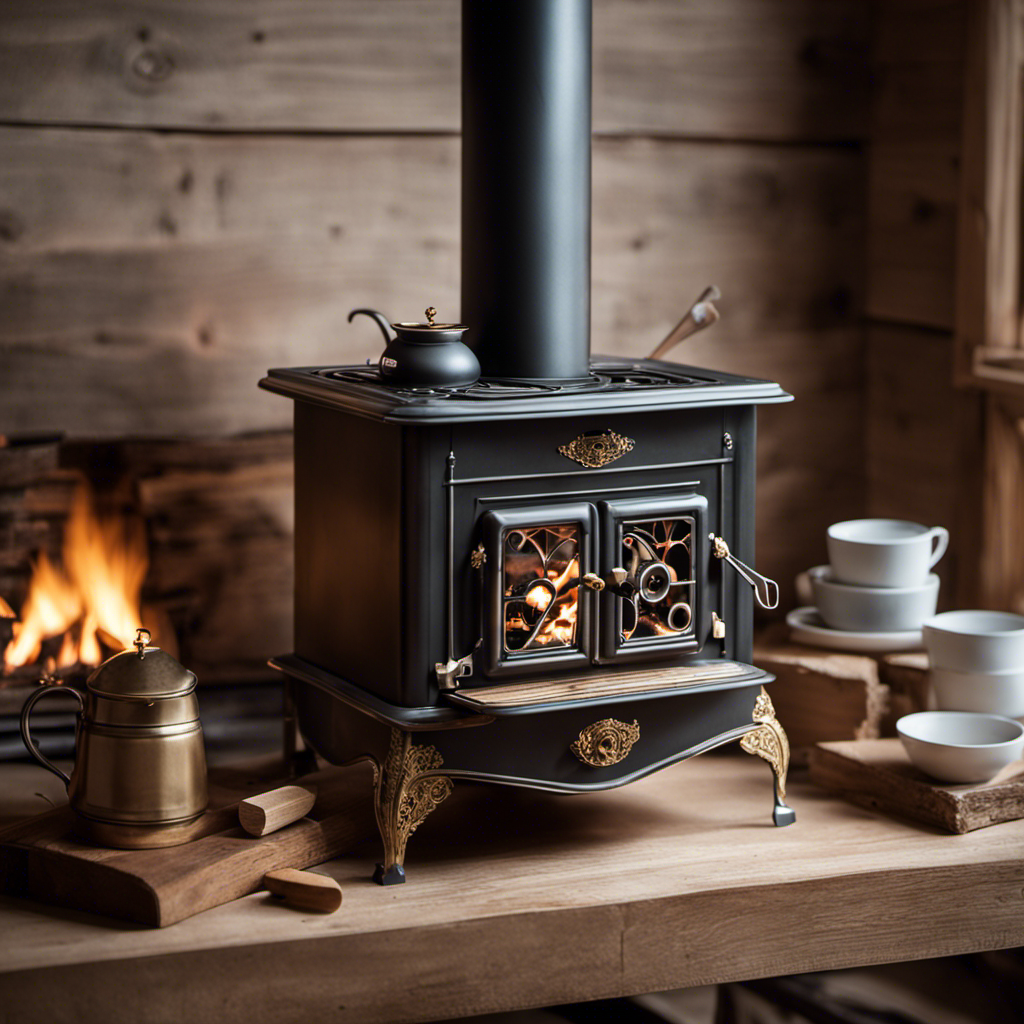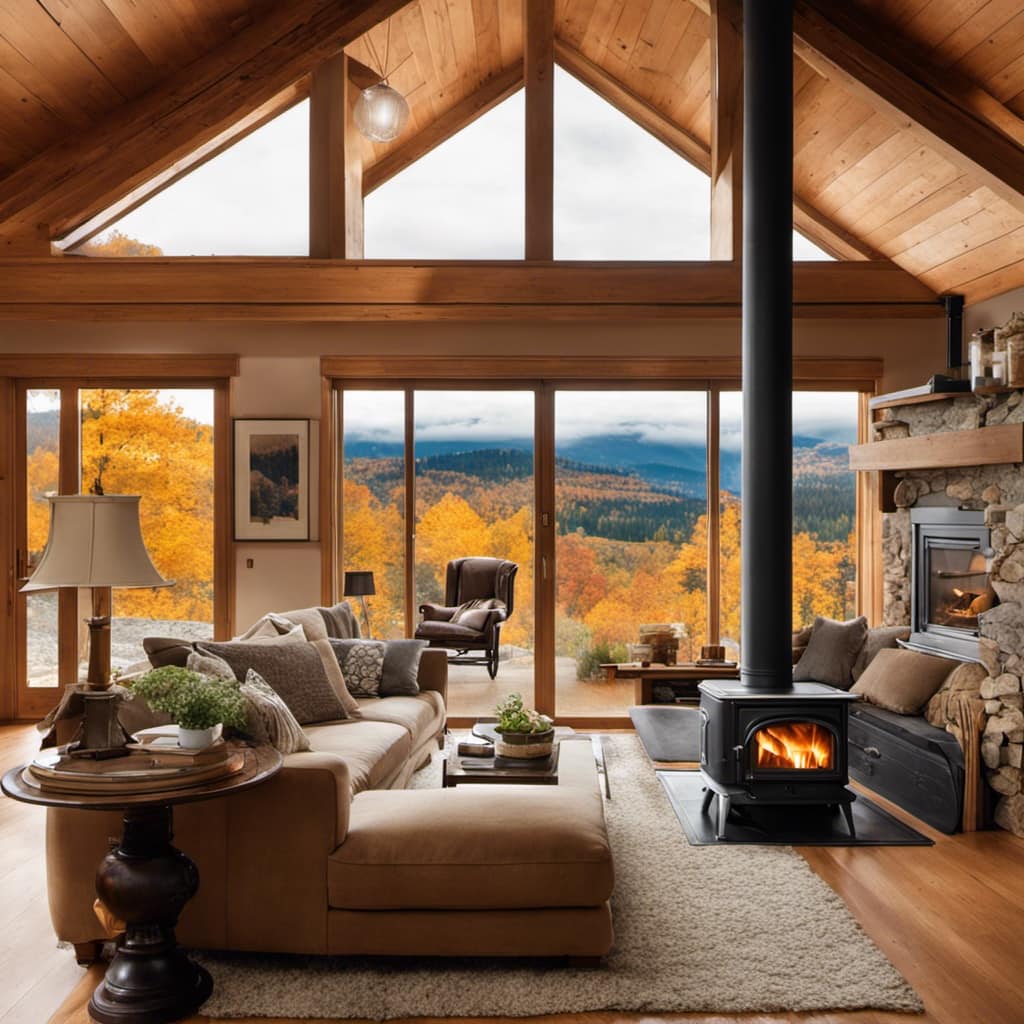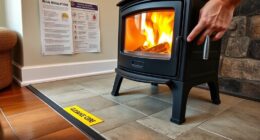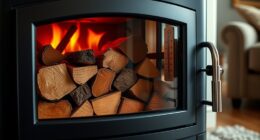As a passionate fan of wood stoves, I am constantly looking for ways to enhance the effectiveness of my warm fires. In this article, I will share several crucial tips and strategies to help you maximize the efficiency of your wood stove.
From choosing the right wood to enhancing heat distribution, insulating your stove, and even upgrading with new technologies, you’ll discover practical ways to make your wood stove perform at its best.
Let’s dive in and make those fires burn brighter and longer!
Key Takeaways
- Ensure the wood stove is well-insulated, properly sized, and regularly maintained for optimal efficiency.
- Use hardwoods like oak and maple, which have lower moisture content, for higher heat output and longer burn times.
- Control airflow and burn rate with a damper, avoid overloading the stove, and keep the firebox clean for efficient burning.
- Maximize airflow and heat distribution by positioning the stove correctly, using heat-resistant materials, and insulating the stove and chimney.
Understanding the Basics of Wood Stove Efficiency
I really need to understand the basics of wood stove efficiency. When it comes to burning wood in a stove, there are certain burning techniques and energy-saving practices that can significantly improve efficiency.
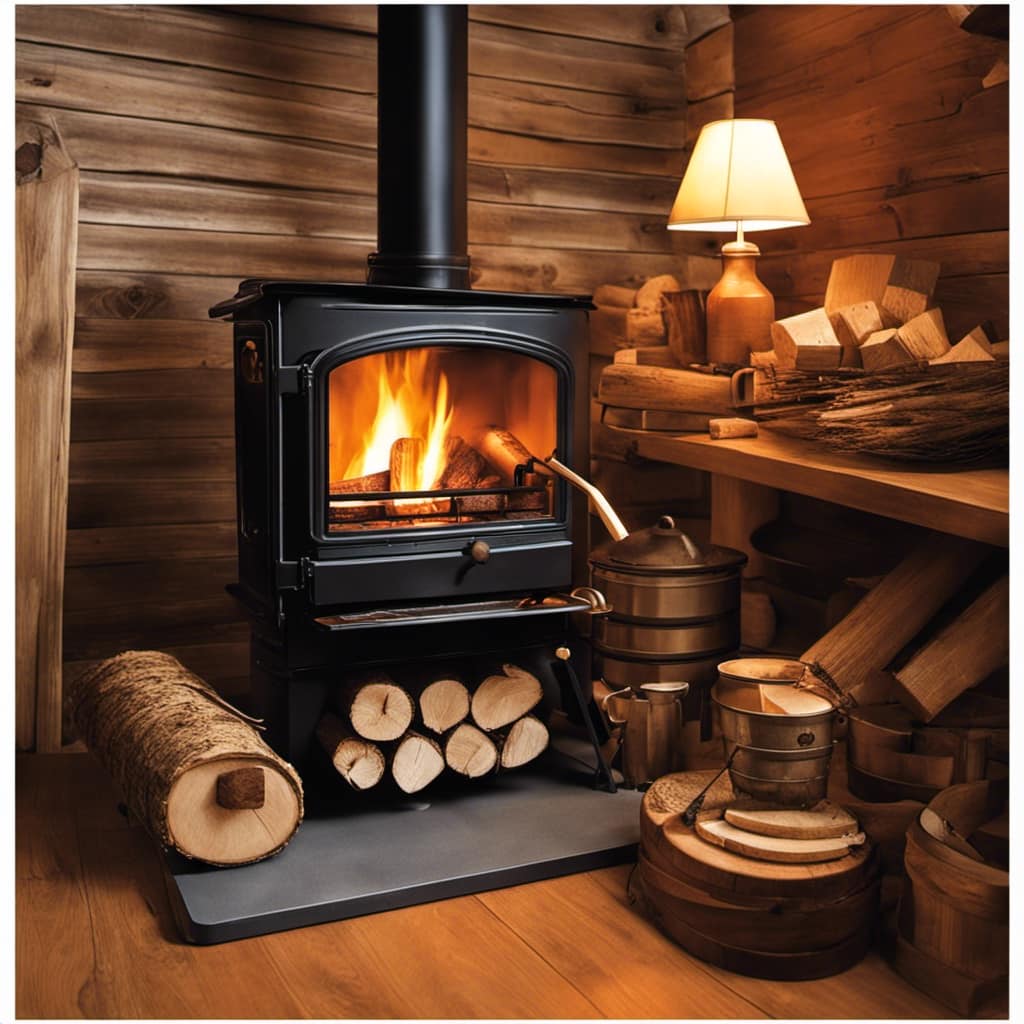
Firstly, it’s important to have a well-insulated and properly sized wood stove. This ensures that the heat produced by the burning wood is efficiently utilized to warm the surrounding space. A stove with a high efficiency rating will ensure that less heat is wasted and more is used to heat your home.
Secondly, using dry and seasoned firewood is crucial for efficient burning. Wet or green wood contains higher moisture content, which reduces its energy output and creates more smoke. It’s recommended to let the firewood dry for at least six months before using it in your wood stove.
Additionally, proper airflow control is essential. By adjusting the air intake, you can control the rate of combustion and maximize heat production. It’s advisable to start with a high airflow to establish a good fire, and then gradually reduce it to maintain a steady burn.
Lastly, regular maintenance and cleaning of your wood stove are essential for optimal efficiency. Removing ash buildup and cleaning the chimney will ensure proper airflow and prevent any obstructions that could hinder the stove’s performance.
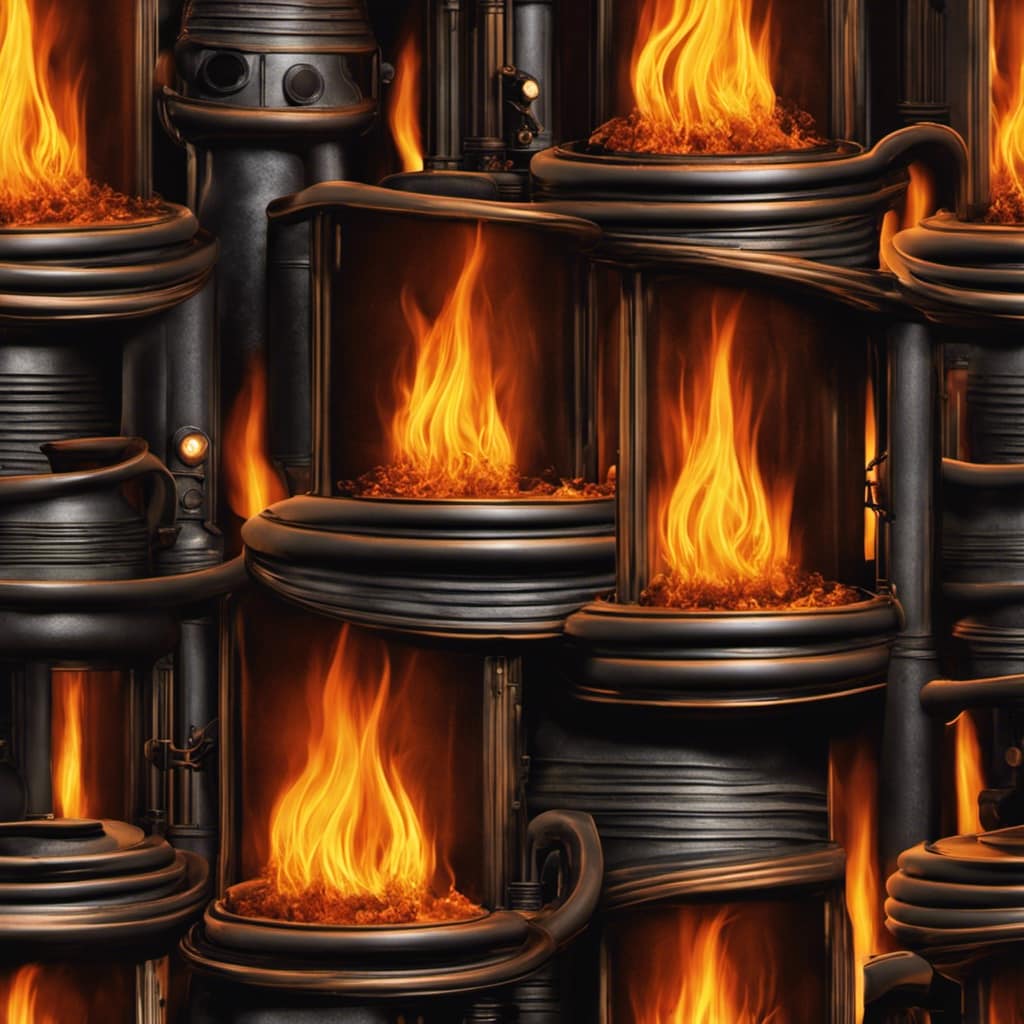
Choosing the Right Wood for Optimal Efficiency
When it comes to achieving optimal efficiency with a wood stove, choosing the right type of wood is crucial. Different wood types have varying levels of density, moisture content, and burning properties that directly impact the stove’s performance.
Best Wood Types
Using hardwoods like oak or maple in my wood stove can greatly increase its efficiency. These species of wood are known for their high heat output and long burn times. They have a lower moisture content compared to softwoods like pine or spruce, which means they burn more efficiently and produce less smoke and creosote buildup. The moisture content of wood is important because wet or green wood requires more energy to burn off the excess moisture, leading to less heat output and increased pollution. In contrast, hardwoods with a moisture content of around 20% or less provide a cleaner burn and higher heat output. By choosing the best wood species and ensuring a low moisture content, I can maximize the efficiency of my wood stove.
| Wood Species | Moisture Content |
|---|---|
| Oak | 15% |
| Maple | 18% |
| Pine | 30% |
| Spruce | 35% |
Burning Temperature and Efficiency
The higher heat output and longer burn times of hardwoods like oak or maple can greatly improve the efficiency of my wood stove. When it comes to burning techniques, there are a few key factors to consider in order to maximize heat transfer and efficiency:
- Use smaller pieces of wood to ensure more complete combustion.
- Build a hot fire by starting with dry kindling and gradually adding larger pieces of wood.
- Avoid overloading the stove with too much wood, as this can restrict airflow and hinder efficient burning.
- Keep the firebox clean, removing ashes regularly to allow for proper air circulation.
- Use a damper to control the airflow and maintain a steady burn rate.
Properly Storing and Seasoning Firewood for Efficiency
I always make sure to store and season my firewood properly to increase the efficiency of my wood stove. Proper firewood storage and seasoning are crucial for achieving optimal performance from your wood stove.
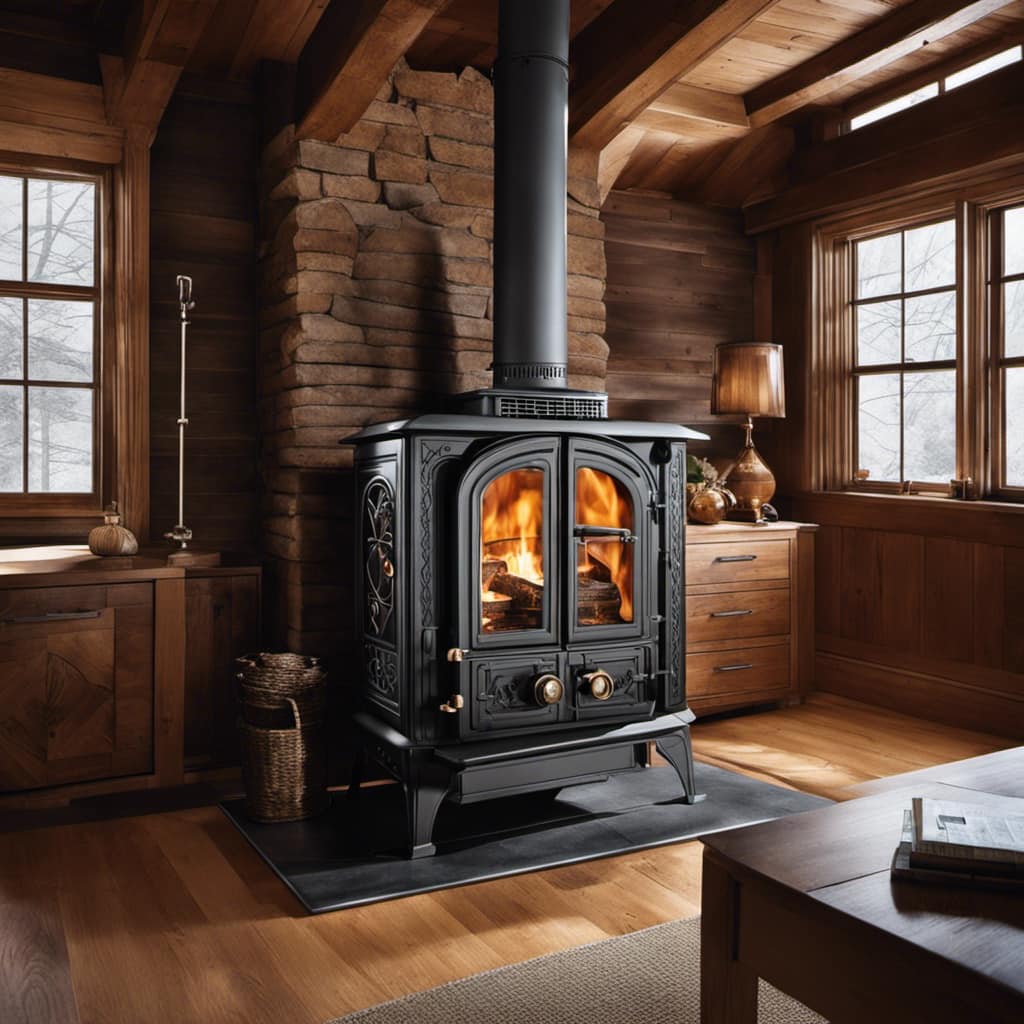
When it comes to firewood storage, it’s important to keep the wood off the ground to prevent moisture absorption. I use a firewood rack or elevated platform to ensure proper airflow and keep the wood dry. Additionally, it’s essential to stack the firewood in a way that allows air circulation. This helps the wood to dry evenly and prevents the growth of mold or fungi.
Firewood seasoning is another critical step in maximizing wood stove efficiency. Freshly cut wood contains a high moisture content, which can hinder the combustion process. To properly season firewood, it needs to be stored for at least six months to a year, depending on the type of wood. During this time, the wood loses its moisture, making it more efficient to burn. I store my firewood in a well-ventilated area, protected from rain or snow.
Maximizing Airflow: Tips for Properly Loading Your Wood Stove
To ensure optimal performance, I always prioritize maximizing airflow when loading my wood stove. Proper airflow is essential for reducing smoke emissions and improving combustion efficiency.
Here are some tips for properly loading your wood stove to achieve these goals:
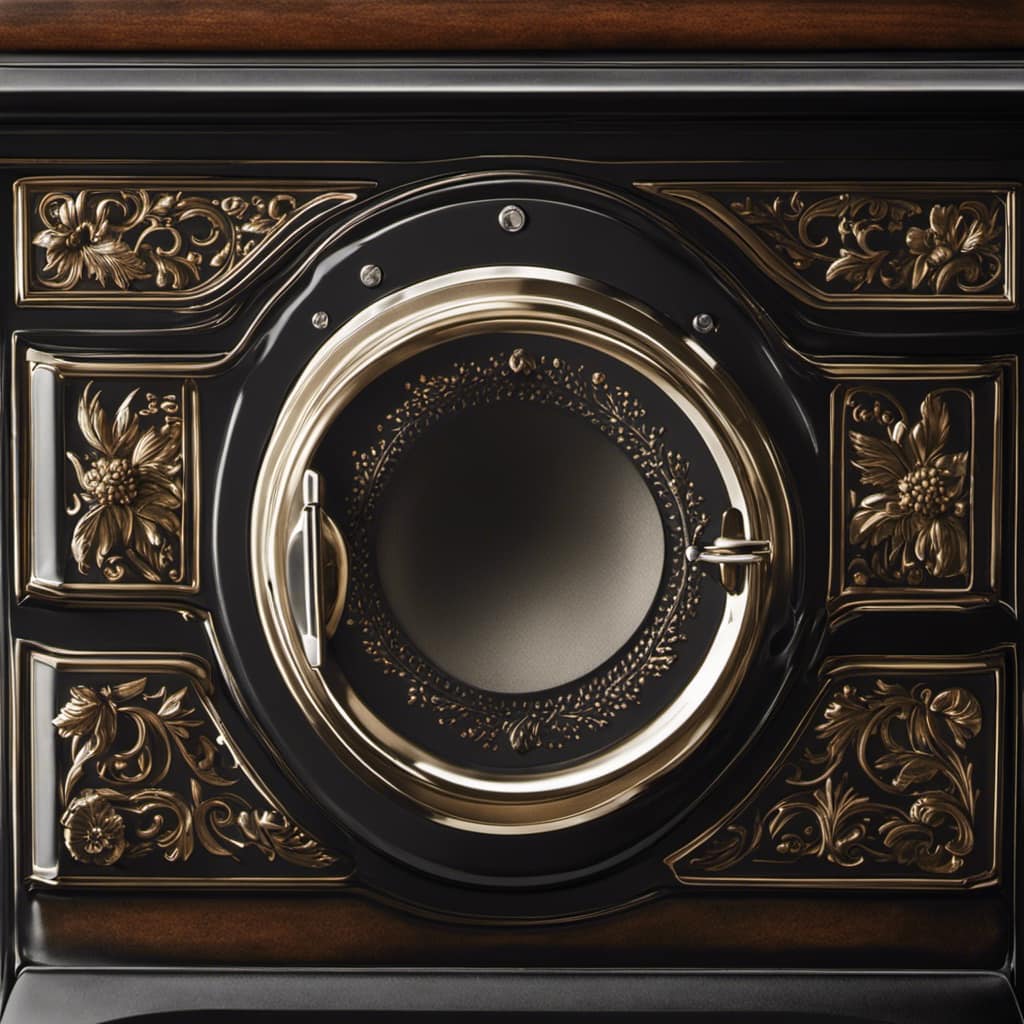
-
Use dry and well-seasoned firewood: Wet or green wood produces more smoke and reduces the efficiency of combustion. Make sure to store and season your firewood properly before using it.
-
Arrange the wood in a crisscross pattern: This allows for better airflow between the logs, promoting efficient combustion and reducing smoke emissions.
-
Place smaller pieces of wood on top: Starting with smaller pieces on top helps to ignite the fire quickly and establish a strong draft.
-
Avoid overloading the stove: Overloading the stove can restrict airflow, leading to incomplete combustion and increased smoke production. Load the stove with the appropriate amount of wood for your heating needs.
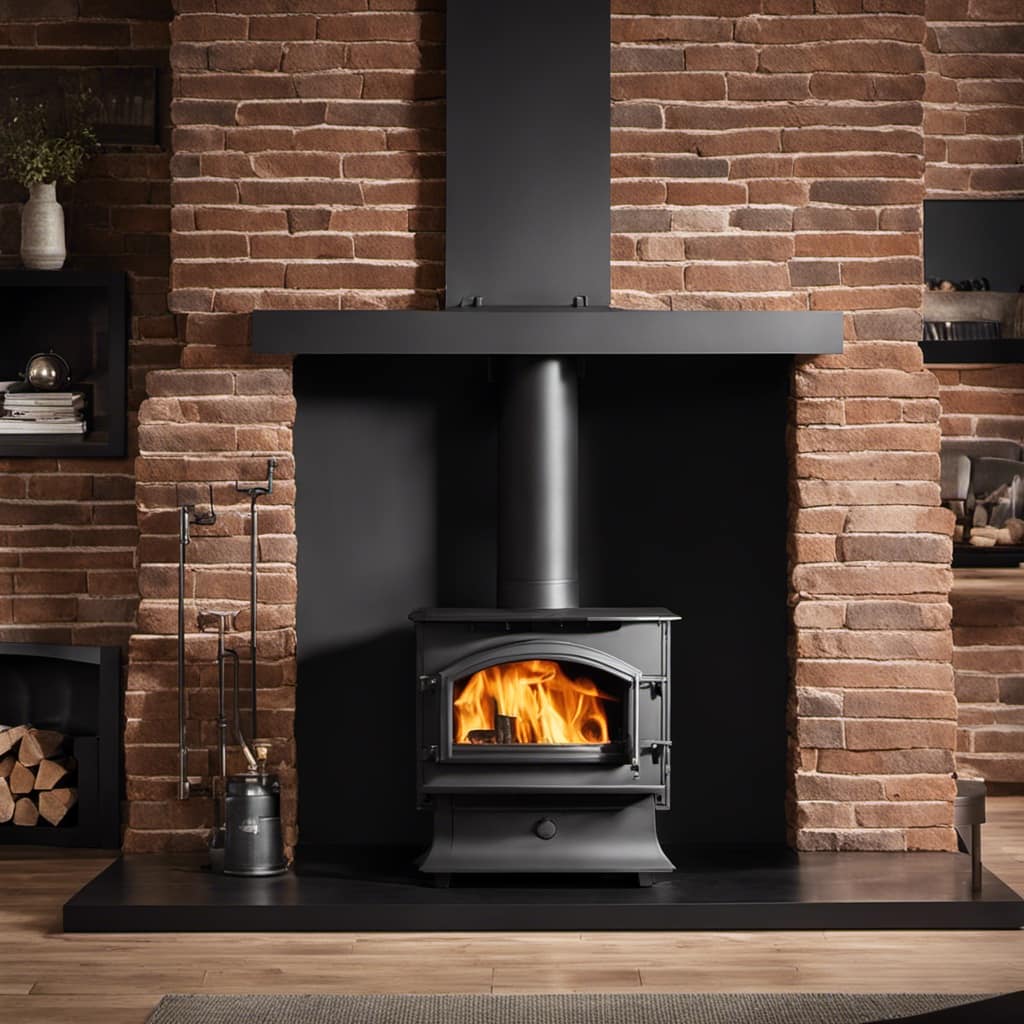
-
Clean the air vents and chimney regularly: Blocked air vents and chimney can hinder airflow and decrease combustion efficiency. Regularly clean these areas to maintain optimal performance.
By following these tips, you can reduce smoke emissions and improve the combustion efficiency of your wood stove, ensuring a more efficient and environmentally friendly heating experience.
Now, let’s move on to enhancing heat distribution: tips for placing your wood stove.
Enhancing Heat Distribution: Tips for Placing Your Wood Stove
When it comes to enhancing heat distribution from your wood stove, proper placement is crucial. To maximize the efficiency of your stove, it’s important to consider factors such as optimal stove placement, airflow, and circulation.
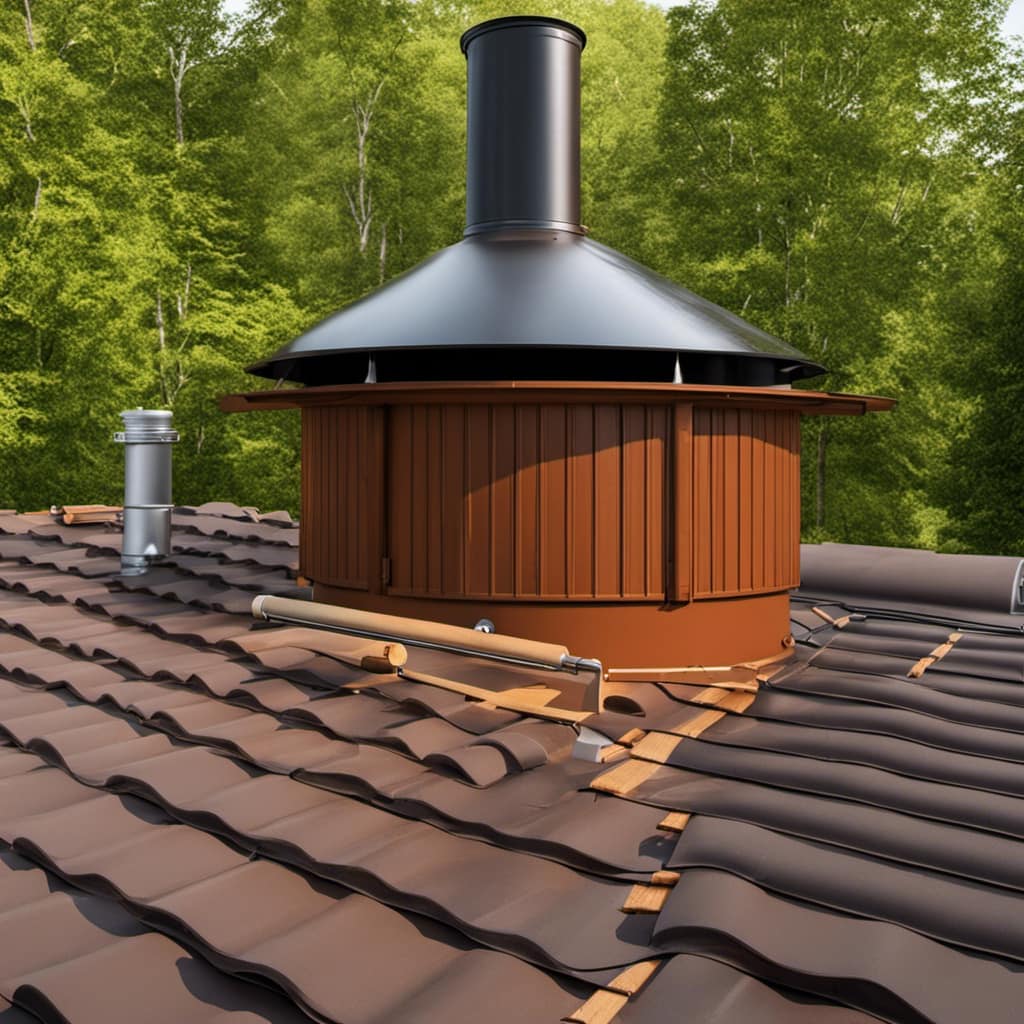
Additionally, having heat-resistant materials nearby can help to further distribute and retain the heat generated by your stove.
Optimal Stove Placement
In my experience, placing the wood stove in a central location helps to distribute heat more efficiently throughout the room. When it comes to optimal stove placement, there are a few key factors to consider:
-
Clearance: Ensure that the stove is placed at least three feet away from any combustible materials, such as furniture or curtains.
-
Ventilation: Position the stove near a wall or window to allow for proper ventilation. This will help to draw in fresh air and improve the stove’s efficiency.
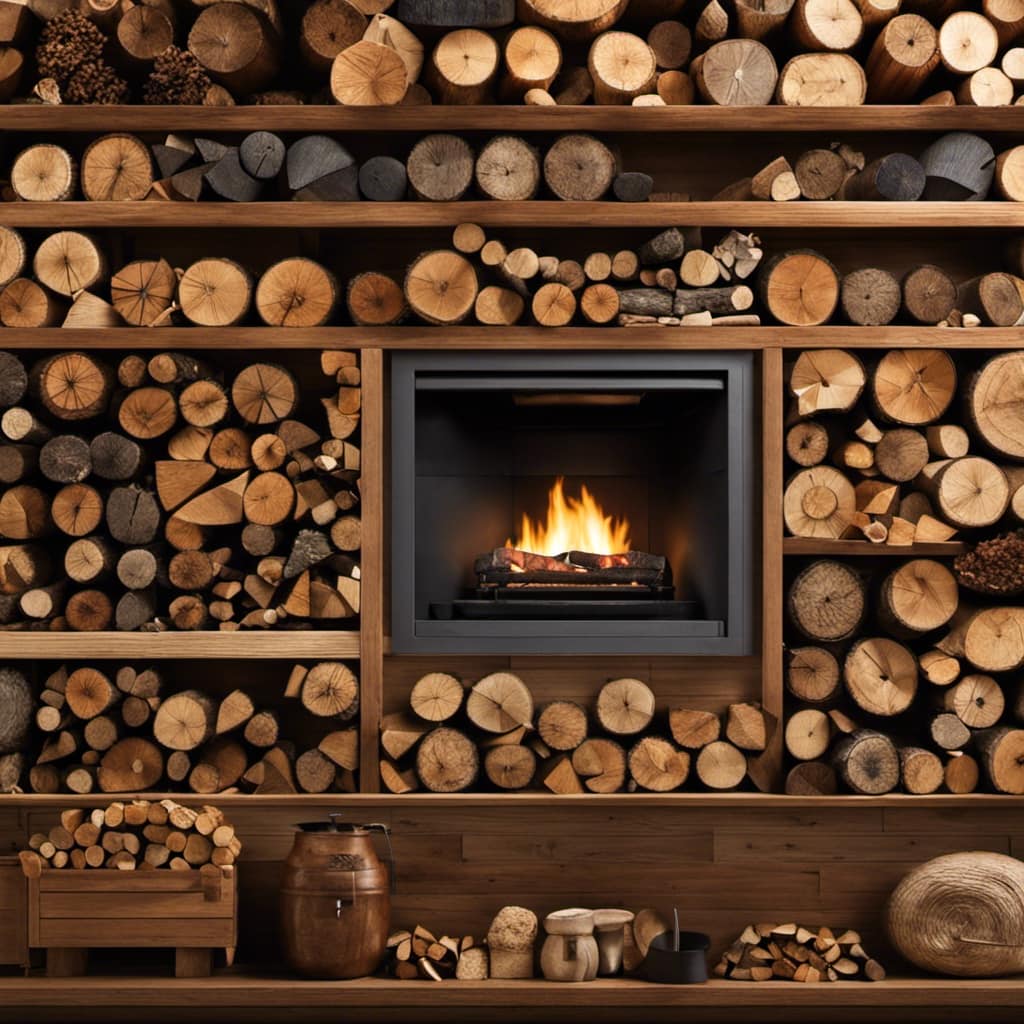
-
Heat flow: Place the stove in a location where the heat can easily flow into the main living areas of the house. This could be in a central hallway or near the stairwell.
-
Flooring: Opt for a non-combustible and heat-resistant flooring material, such as tile or stone, to prevent any potential fire hazards.
-
Accessibility: Consider the ease of access for adding fuel and cleaning out ashes. Choose a location that allows for convenient maintenance of the stove.
Airflow and Circulation
I find that placing the wood stove near a window or wall helps to improve airflow and circulation in the room. This is because the proximity to a window or wall allows for better air movement and distribution throughout the space.
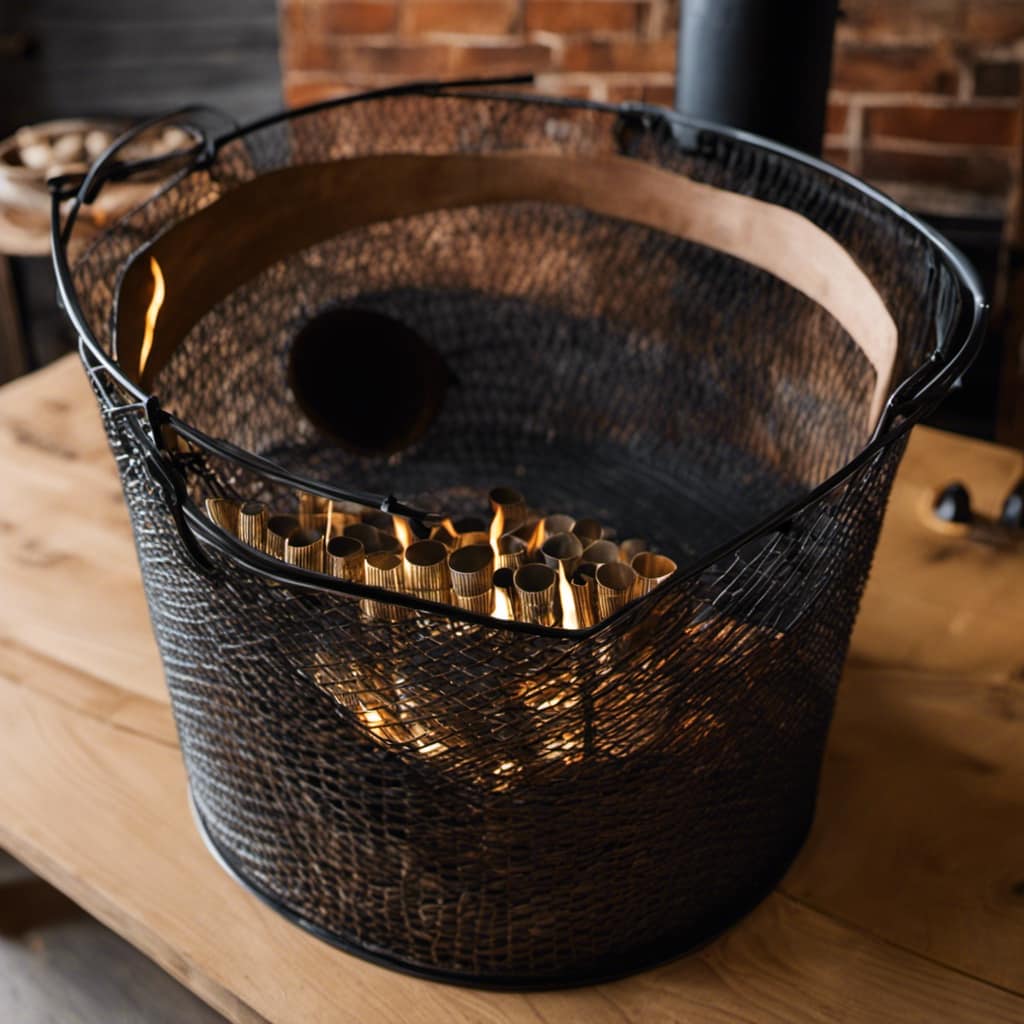
When the stove is placed near a window, it creates a natural flow of air as the warm air from the stove rises and draws in cooler air from outside. This helps to improve the overall efficiency of the wood stove by ensuring that the heat is evenly distributed throughout the room.
Additionally, positioning the stove near a wall can create a chimney effect, where the warm air is drawn up and out of the room, further enhancing the circulation.
These simple placement techniques can greatly enhance the performance of a wood stove and contribute to a more comfortable and efficient heating experience.
Heat-Resistant Materials Nearby
Placing heat-resistant materials nearby ensures the safety and durability of the wood stove.
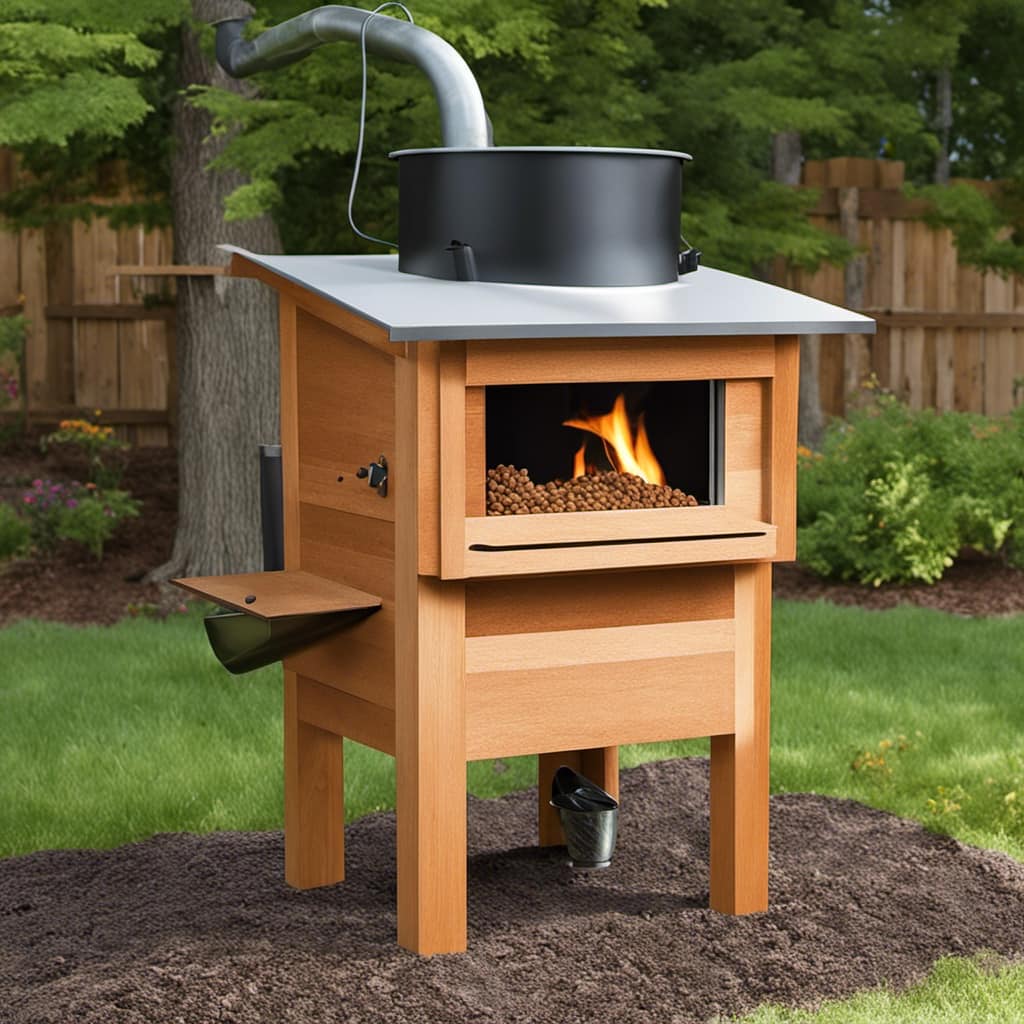
When it comes to using a wood stove, it’s important to take precautions to prevent any potential hazards. Here are some key factors to consider:
-
Using heat shields: Heat shields are designed to protect nearby walls and furniture from excessive heat. They create a barrier between the stove and flammable materials, reducing the risk of fire.
-
Proper ventilation: Adequate airflow is essential for efficient combustion and preventing the buildup of harmful gases. Ensure that your wood stove is properly ventilated by installing a chimney and following the manufacturer’s guidelines.
-
Fire-resistant flooring: Place a fire-resistant material, such as ceramic tiles or a stone hearth, underneath the wood stove to protect the floor from heat and potential sparks.
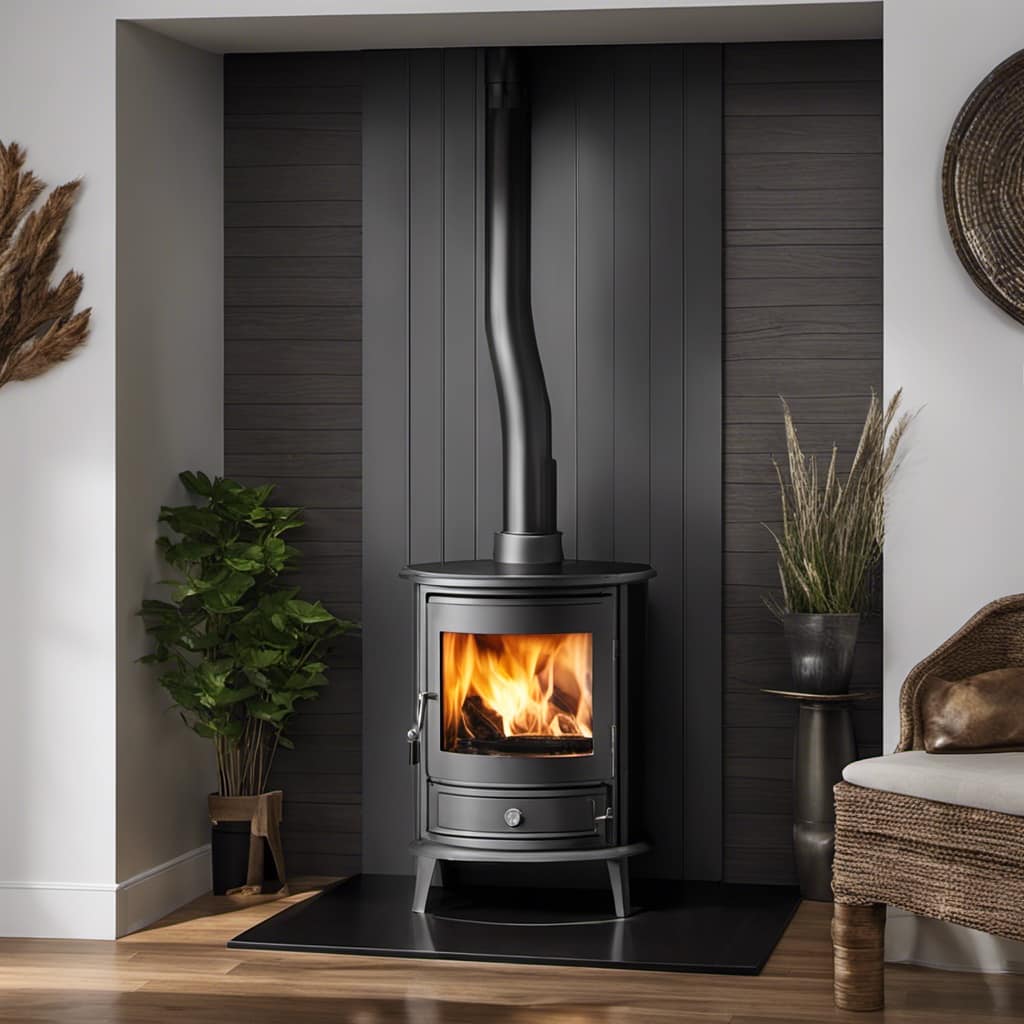
-
Clearance distance: Maintain the recommended clearance distance between the wood stove and any combustible materials, such as furniture or curtains, to prevent them from catching fire.
-
Regular maintenance: Keep your wood stove in good condition by regularly cleaning and inspecting it. This will help ensure its longevity and safe operation.
Insulating Your Wood Stove and Chimney for Improved Efficiency
To improve the efficiency of my wood stove, I insulate both the stove and chimney. Insulating techniques are crucial for maximizing the heat output and minimizing heat loss.
One of the energy-saving options I employ is adding insulation around the stove. I use a high-temperature insulation material, such as ceramic fiber blanket or rock wool, to wrap around the stove. This helps to keep the heat inside and prevents it from escaping into the surrounding environment.

Another important aspect is insulating the chimney. I ensure that there’s proper insulation around the chimney pipe to prevent heat loss. Using a chimney insulation wrap or a chimney liner made of a heat-resistant material, such as stainless steel, can greatly improve the stove’s efficiency. These insulating materials help to maintain high temperatures inside the chimney, allowing for a stronger draft and better combustion.
By insulating both the wood stove and chimney, I create a more efficient heating system. The insulation helps to retain the heat generated by the stove, allowing it to circulate and warm the room more effectively. Additionally, insulating the chimney reduces the amount of heat lost during the venting process, ensuring that more heat is directed into the living space.
These energy-saving measures not only improve the efficiency of my wood stove but also help to reduce energy costs and environmental impact.
Cleaning and Maintaining Your Wood Stove for Maximum Performance
Regular cleaning and maintenance of my wood stove is essential for optimal performance. As a wood stove owner, I’ve learned a few cleaning techniques that help keep my stove running smoothly and efficiently. Here are some tips to help you maintain your wood stove:
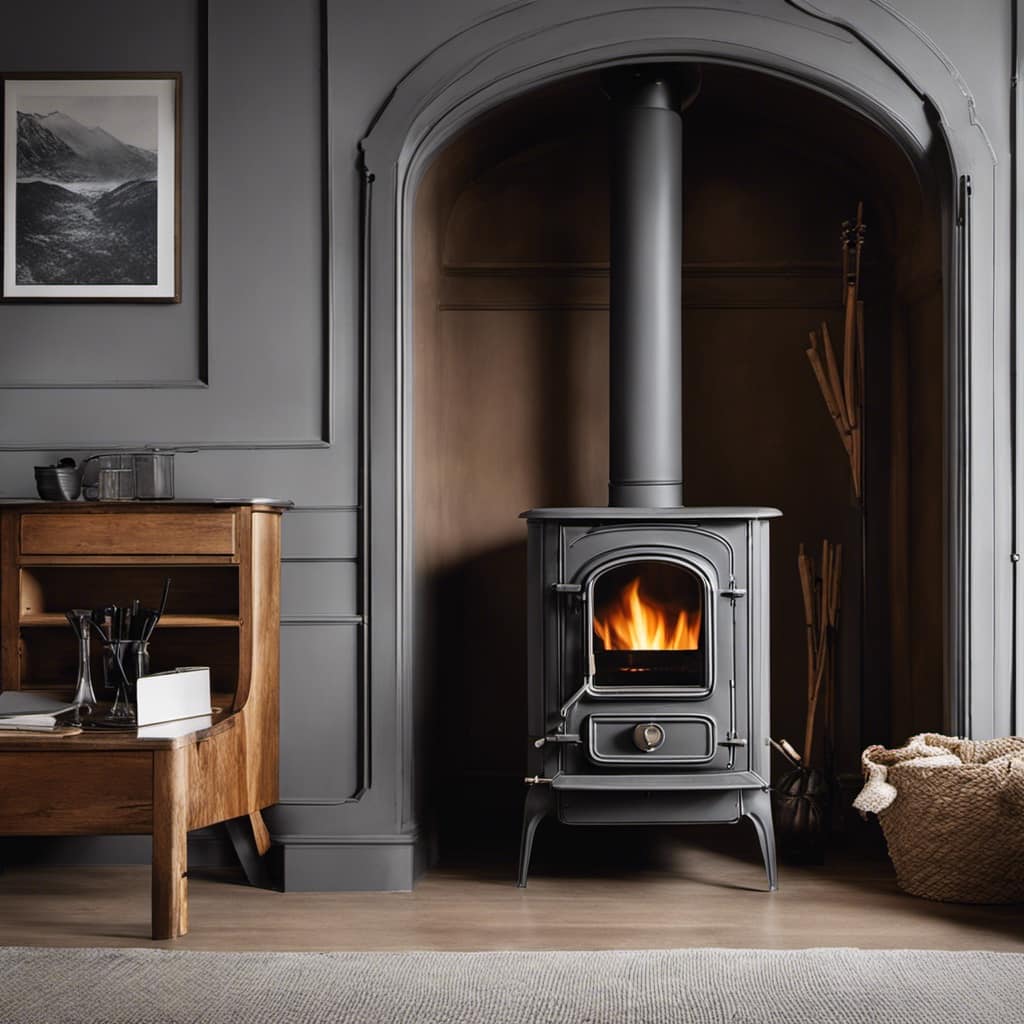
-
Clear the ash: Removing the ash regularly is crucial for proper airflow. Use a metal scoop or ash vacuum to safely dispose of the ash.
-
Clean the glass: Over time, the glass on the door can become dirty and obstruct the view of the fire. Clean it with a specialized glass cleaner to restore visibility.
-
Check the gaskets: The gaskets around the door and other openings should be inspected regularly. Replace any worn or damaged gaskets to ensure a tight seal and prevent heat loss.
-
Clean the chimney: A dirty chimney can lead to poor draft and inefficient burning. Hire a professional chimney sweep or use a chimney brush to remove creosote buildup.
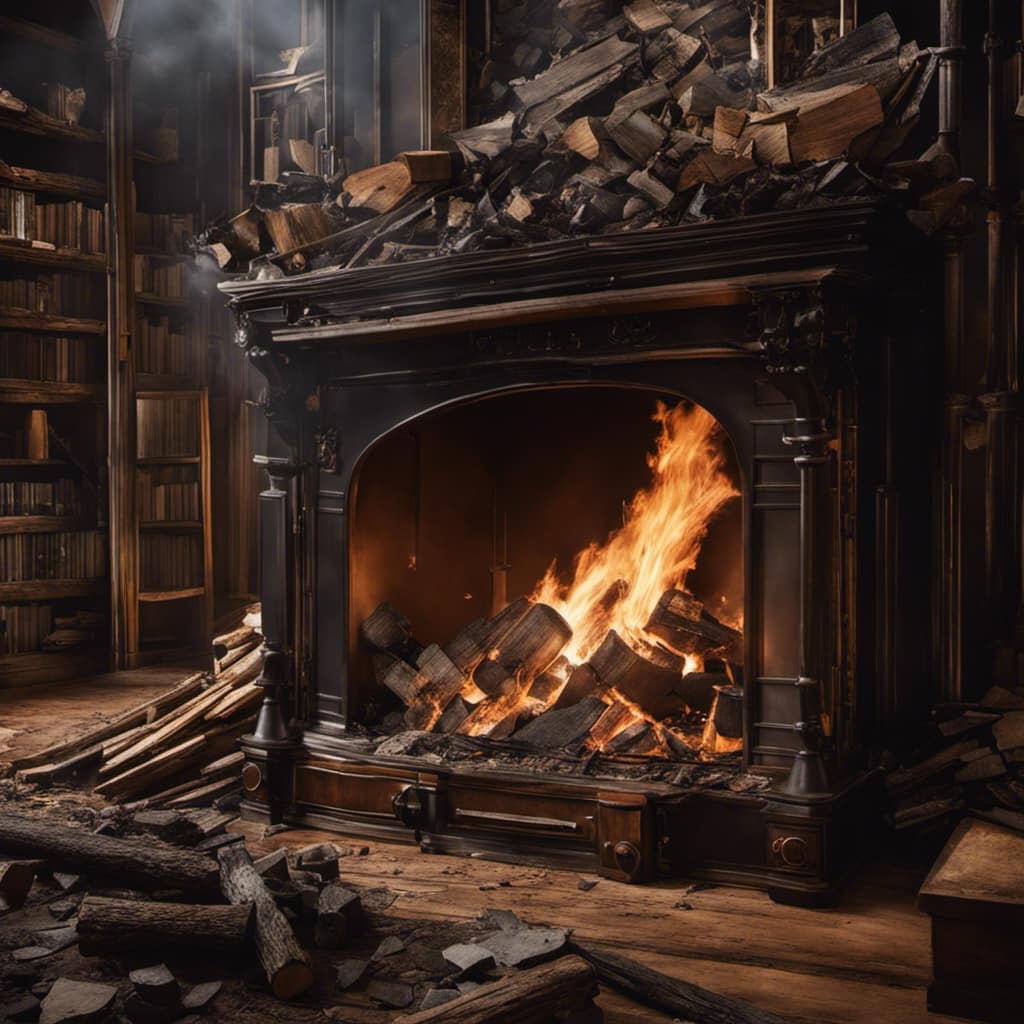
-
Troubleshoot common issues: If you notice problems like difficulty in lighting the fire or excessive smoke, check for obstructions in the flue, ensure proper air intake, and adjust the damper settings if necessary.
Upgrading Your Wood Stove: Efficiency-Boosting Features and Technologies
As a wood stove owner, I’ve found that upgrading to a model with advanced features and technologies significantly improves performance and reduces energy consumption. Upgrading technology in wood stoves can lead to increased efficiency and a more enjoyable heating experience.
One of the key advancements in wood stove technology is the incorporation of secondary burn systems. These systems introduce preheated air into the firebox, allowing for more complete combustion and reduced emissions. By burning off excess gases and particles, secondary burn systems help to maximize the heat output while minimizing the amount of fuel needed.
Another important feature to consider when upgrading your wood stove is the inclusion of a catalytic combustor. This technology helps to further increase efficiency by promoting the combustion of harmful gases and reducing the release of pollutants into the environment. Catalytic combustors work by using a coated ceramic honeycomb that acts as a catalyst to speed up the combustion process.
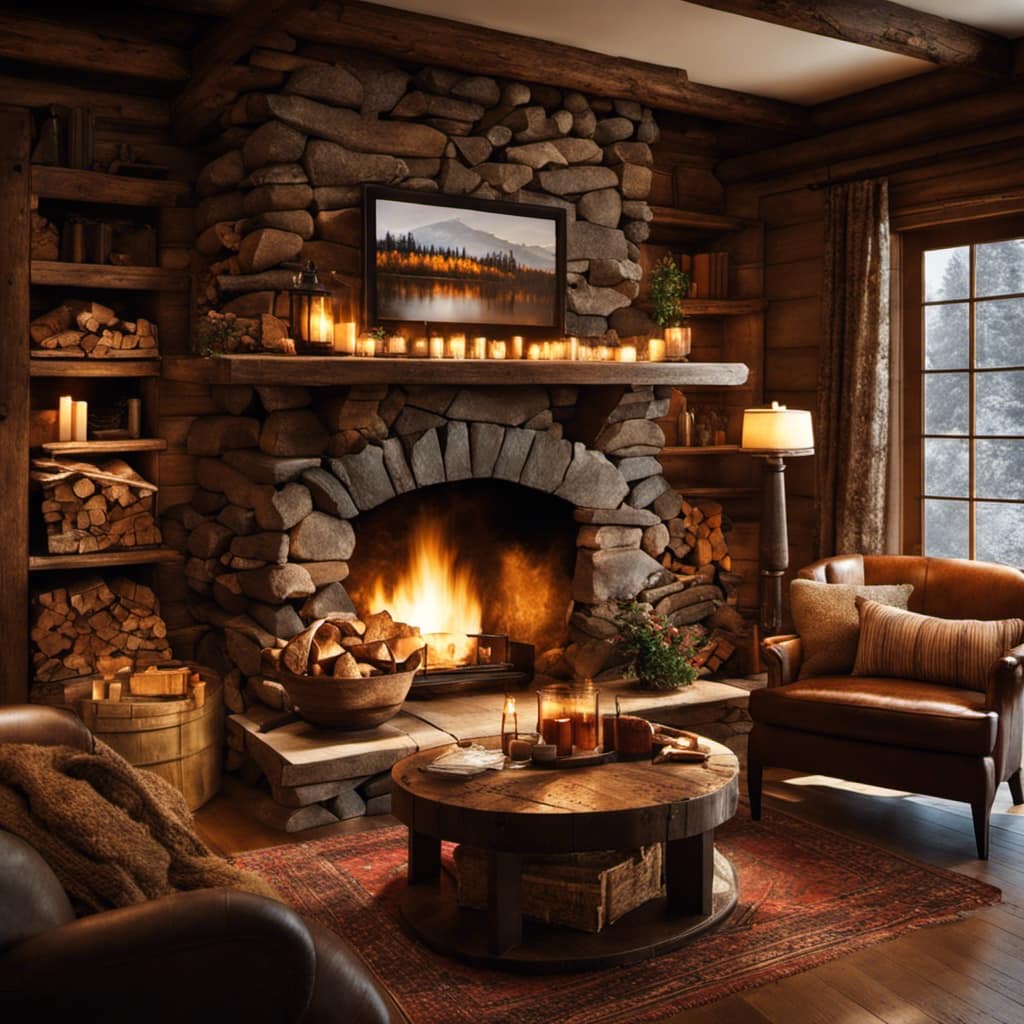
In addition to upgrading technology, considering alternative fuel options can also greatly enhance the efficiency of your wood stove. Some modern wood stoves are designed to burn alternative fuels such as pellets or compressed logs. These fuels have a higher energy density and burn more efficiently, resulting in less waste and a longer burn time. By incorporating these alternative fuel options, you can reduce your reliance on traditional firewood and further enhance the efficiency of your wood stove.
Overall, upgrading your wood stove to a model with advanced features and technologies, such as secondary burn systems and catalytic combustors, can significantly improve performance and reduce energy consumption. Additionally, considering alternative fuel options can further enhance the efficiency of your wood stove. By investing in these advancements and exploring alternative fuels, you can enjoy a more efficient and environmentally-friendly heating experience.
Additional Tips and Tricks for Increasing Wood Stove Efficiency
Using well-seasoned firewood is essential for optimal wood stove performance and reducing energy waste.
When it comes to increasing wood stove efficiency, there are several tips and tricks that can help maximize combustion and save energy. Here are five key strategies to consider:
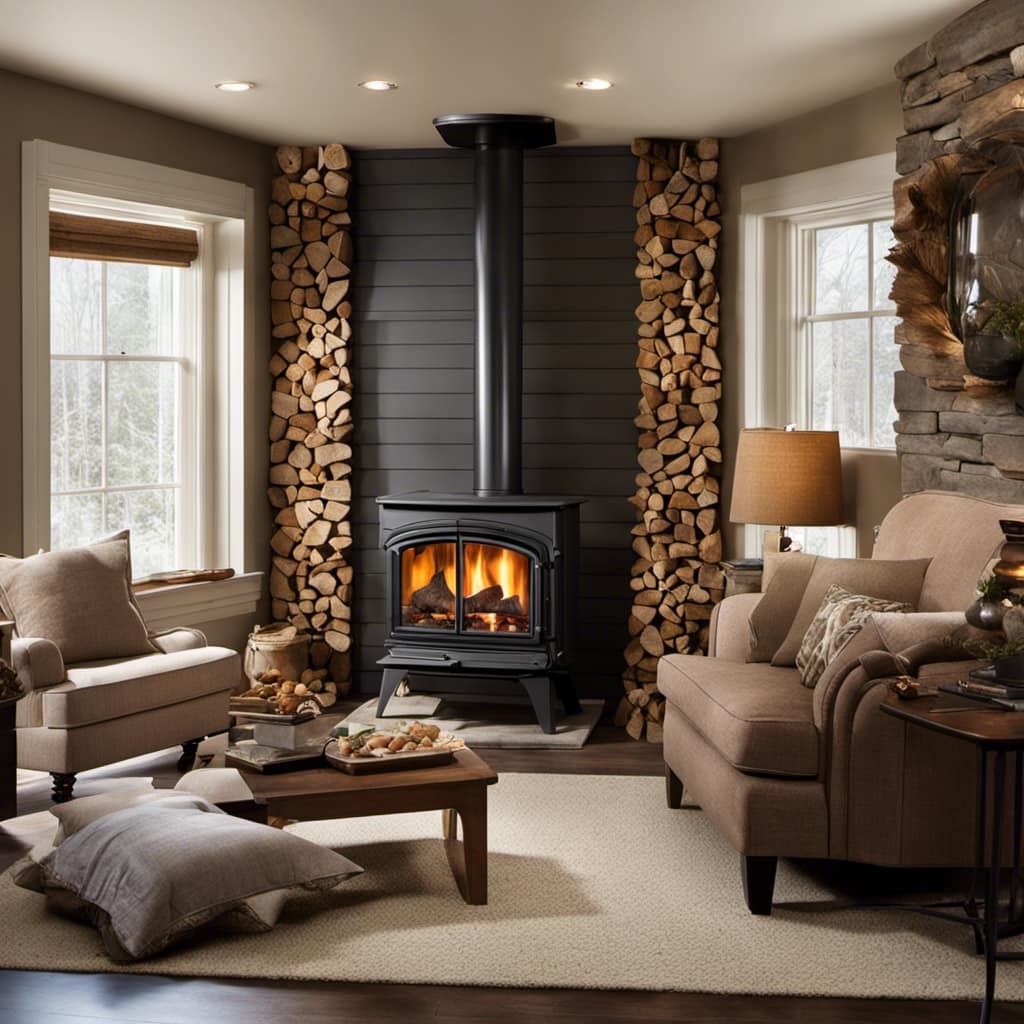
-
Clean the stove regularly: A clean stove allows for better airflow and combustion, resulting in more efficient burning and less waste. Regularly remove ash and debris from the firebox and flue to ensure optimal performance.
-
Use a stove thermometer: Monitoring the temperature inside the stove can help you adjust the air intake and dampers for efficient burning. A stove thermometer helps you maintain the ideal temperature range for combustion.
-
Install a heat-powered stove fan: Energy saving accessories like heat-powered stove fans help distribute warm air throughout the room more effectively. These fans use the heat from the stove to generate electricity, eliminating the need for batteries or electricity.
-
Seal air leaks: Check for any gaps or leaks around the stove and seal them properly. This will prevent cold air from entering and warm air from escaping, improving the overall efficiency of the wood stove.
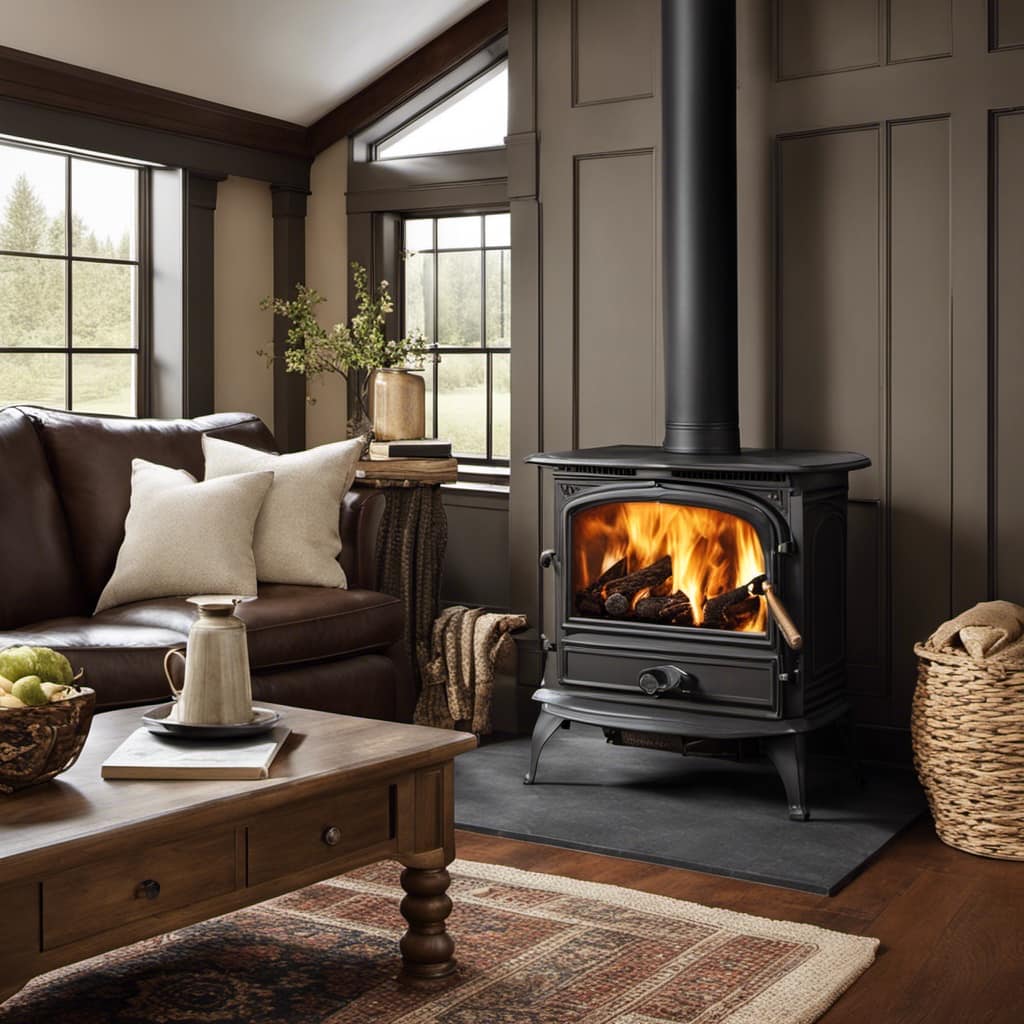
-
Use a moisture meter: Testing the moisture content of firewood is crucial for efficient burning. Well-seasoned firewood with a moisture content of around 20% is ideal for maximum combustion and reduced energy waste.
Frequently Asked Questions
How Much Money Can I Save by Making My Wood Stove More Efficient?
Making my wood stove more efficient can lead to substantial savings in fuel costs. By improving the energy efficiency of the stove, I can reduce fuel consumption and ultimately save money.
There are several tips that can help achieve this, such as properly insulating the stove, using seasoned firewood, and ensuring proper airflow for optimal combustion.
Implementing these measures can result in significant savings over time, making it a worthwhile investment.
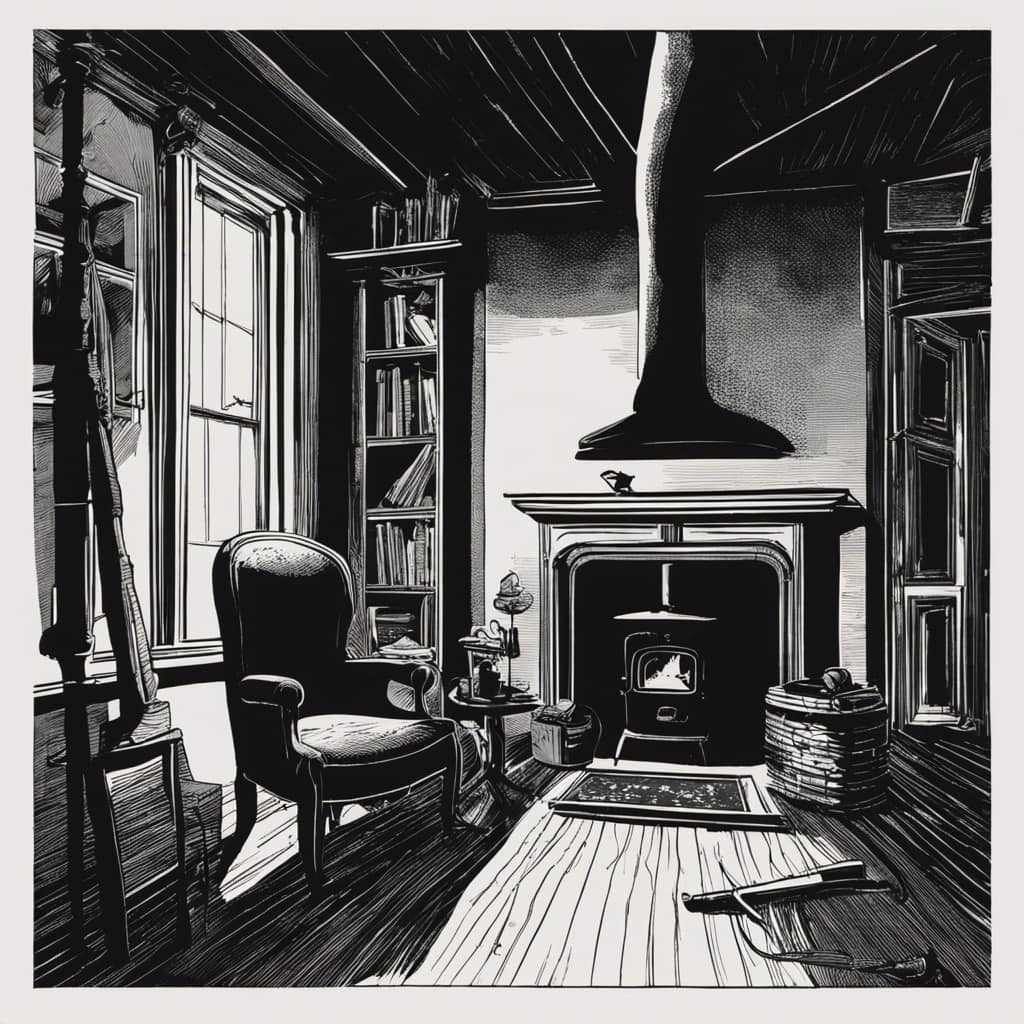
Can I Use Any Type of Wood in My Wood Stove, or Are Some Types More Efficient Than Others?
When it comes to using a wood stove, the type of wood you burn can have an impact on its efficiency. While any type of wood can technically be used, some are more efficient than others.
It’s important to consider the effectiveness of different wood types in wood stoves. One key factor is using seasoned wood, which has been properly dried and can burn more efficiently. This can lead to better heat output and ultimately save you money in the long run.
Are There Any Safety Precautions I Should Take When Insulating My Wood Stove and Chimney?
When it comes to insulating your wood stove and chimney, safety precautions are crucial. Proper insulation helps improve efficiency and prevent heat loss, but it’s important to follow guidelines and use the right materials.
First, ensure that the stove and chimney are clean and in good condition. Use fire-resistant insulation materials and follow the manufacturer’s instructions.
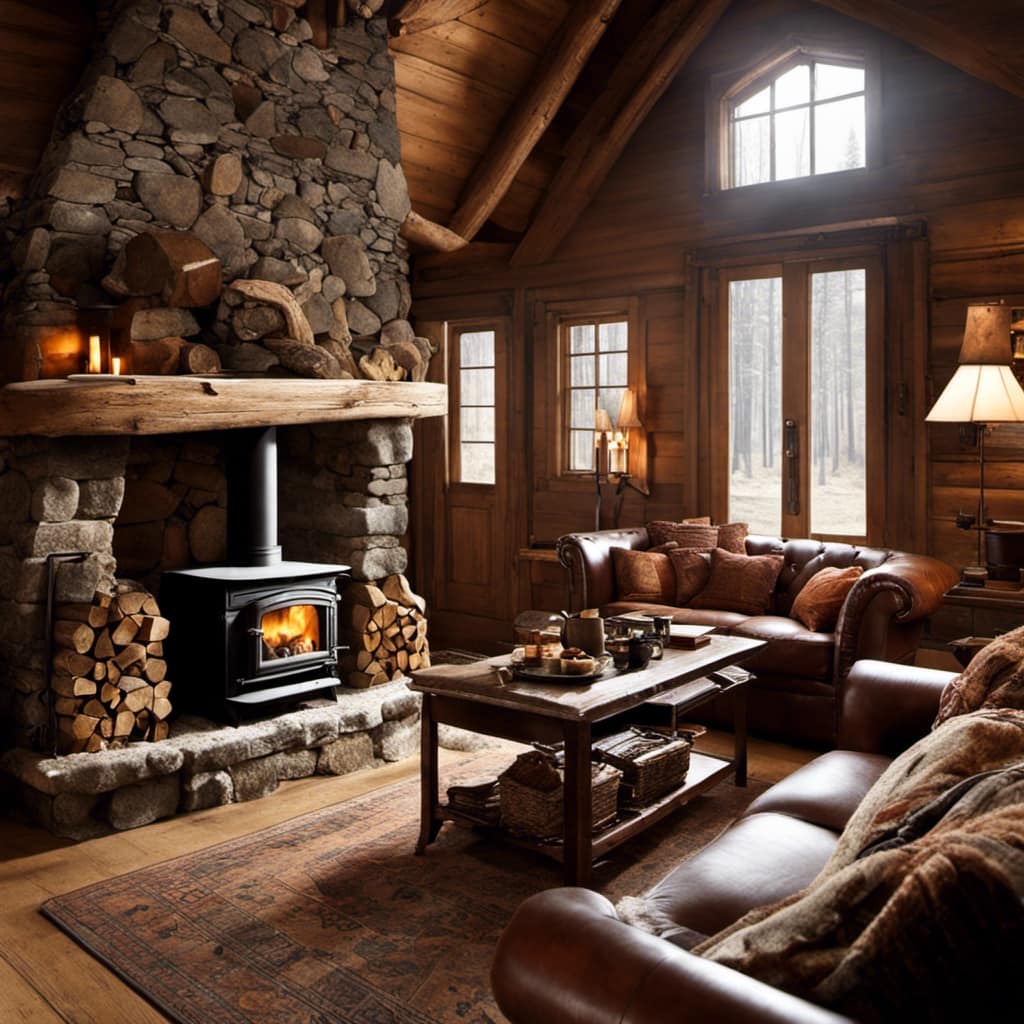
Additionally, proper ventilation is essential to prevent the buildup of harmful gases like carbon monoxide.
Regular maintenance and professional installation are key to ensuring the safety and efficiency of your wood stove.
Is It Necessary to Clean My Wood Stove Regularly, Even if It’s Running Efficiently?
Cleaning your wood stove regularly is necessary, even if it’s running efficiently. Regular cleaning helps maintain its efficiency and prevents potential issues.
The cleaning frequency depends on factors such as usage and the type of wood being burned. A buildup of creosote and other debris can reduce the stove’s efficiency and increase the risk of chimney fires.
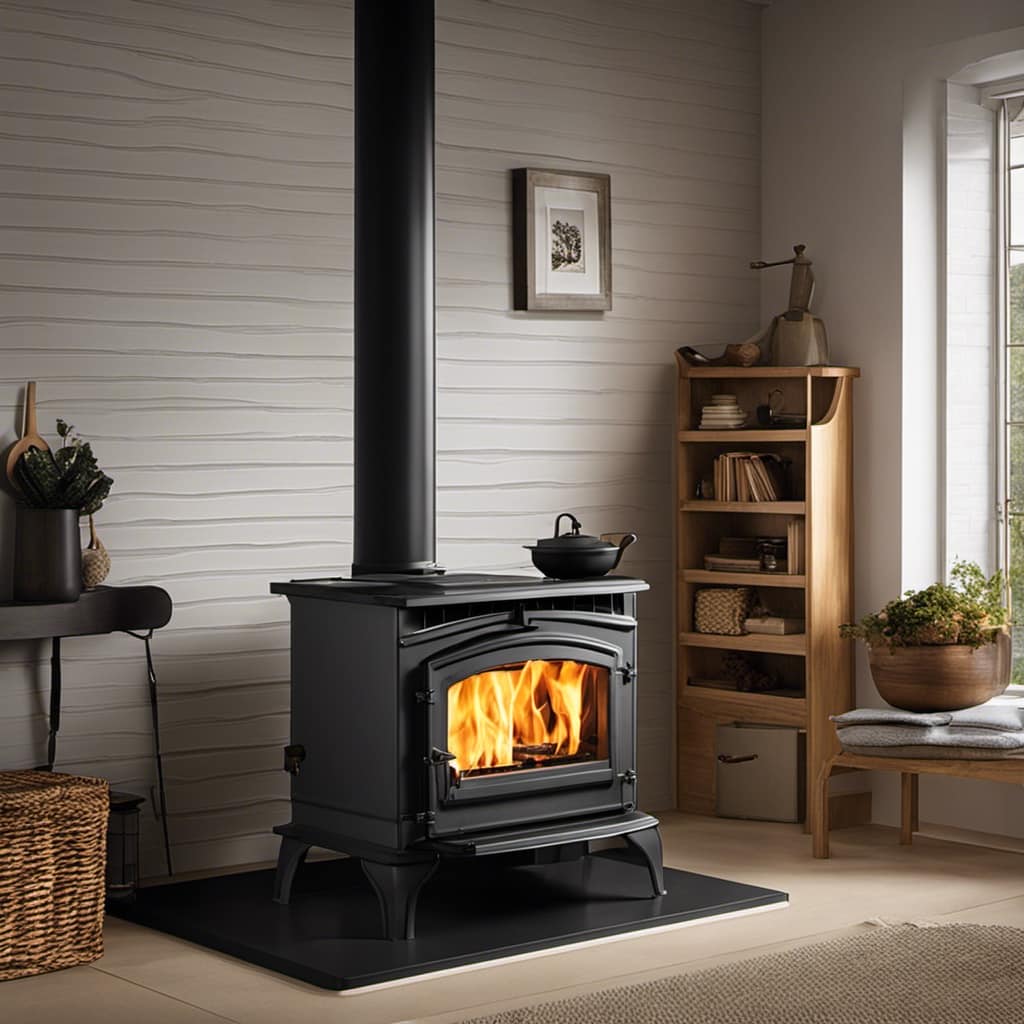
Regular cleaning ensures optimal performance and extends the lifespan of your wood stove.
Are There Any Government Incentives or Tax Credits Available for Upgrading My Wood Stove to a More Efficient Model?
Government incentives and tax credits can be a great way to offset the cost of upgrading to a more efficient wood stove. Many governments offer these incentives as a way to encourage homeowners to choose more eco-friendly heating options. These incentives can vary depending on your location, so it’s important to research what’s available in your area.
Conclusion
As the flames dance and the warmth envelops your home, a well-designed and efficient wood stove can transform your living space into a cozy sanctuary. By understanding the basics of wood stove efficiency, choosing the right wood, properly storing and seasoning firewood, maximizing airflow, enhancing heat distribution, insulating your stove and chimney, and maintaining and upgrading your stove, you can ensure maximum performance and a truly blissful wood-burning experience.
Let the crackling fire ignite your imagination and bring comfort to your soul.

Growing up surrounded by the vast beauty of nature, Sierra was always drawn to the call of the wild. While others sought the comfort of the familiar, she ventured out, embracing the unpredictable and finding stories in the heartbeat of nature.
At the epicenter of every remarkable venture lies a dynamic team—a fusion of diverse talents, visions, and passions. The essence of Best Small Wood Stoves is crafted and refined by such a trio: Sierra, Logan, and Terra. Their collective expertise has transformed the platform into a leading authority on small wood stoves, radiating warmth and knowledge in equal measure.






